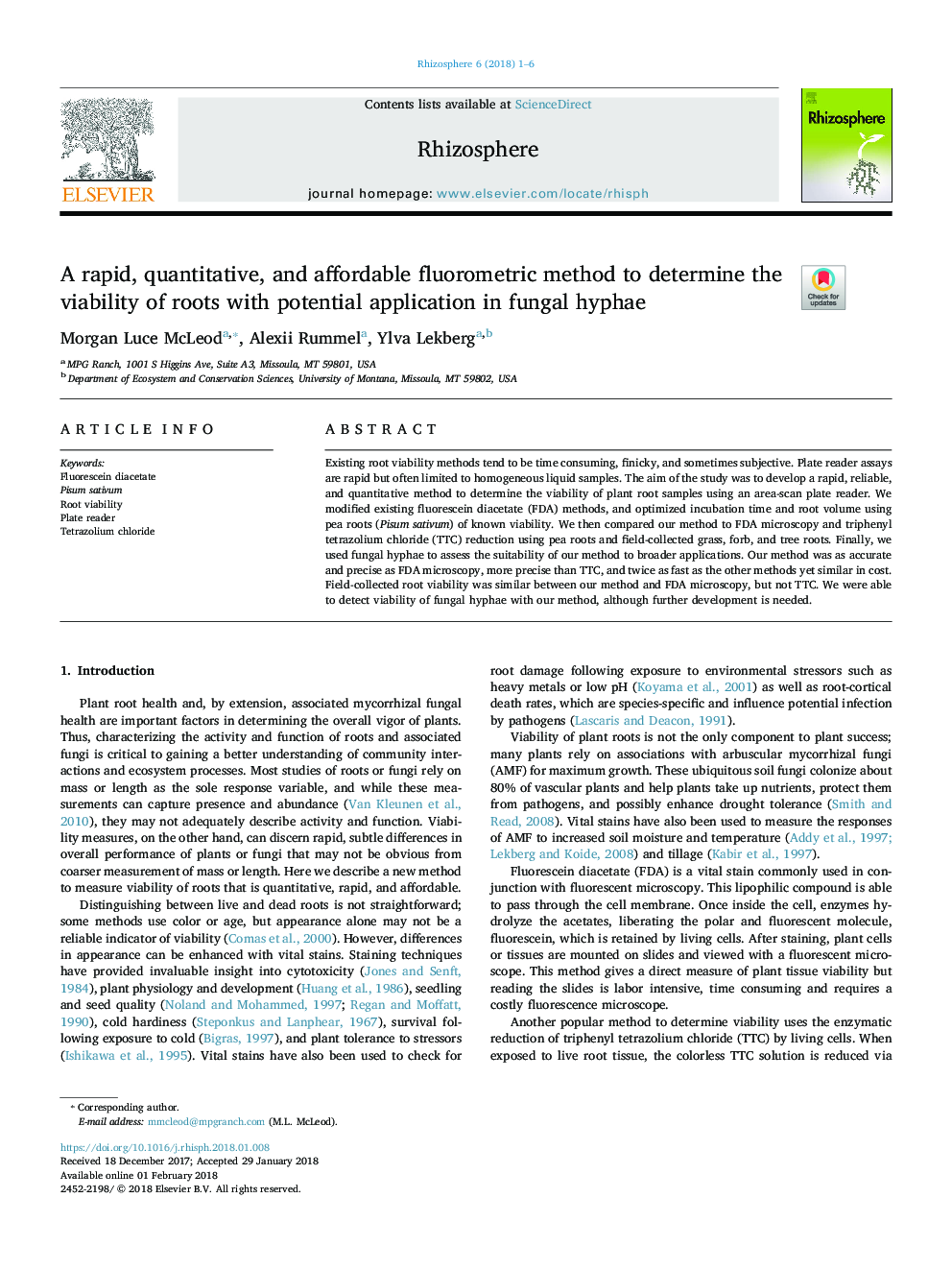| Article ID | Journal | Published Year | Pages | File Type |
|---|---|---|---|---|
| 8882140 | Rhizosphere | 2018 | 6 Pages |
Abstract
Existing root viability methods tend to be time consuming, finicky, and sometimes subjective. Plate reader assays are rapid but often limited to homogeneous liquid samples. The aim of the study was to develop a rapid, reliable, and quantitative method to determine the viability of plant root samples using an area-scan plate reader. We modified existing fluorescein diacetate (FDA) methods, and optimized incubation time and root volume using pea roots (Pisum sativum) of known viability. We then compared our method to FDA microscopy and triphenyl tetrazolium chloride (TTC) reduction using pea roots and field-collected grass, forb, and tree roots. Finally, we used fungal hyphae to assess the suitability of our method to broader applications. Our method was as accurate and precise as FDA microscopy, more precise than TTC, and twice as fast as the other methods yet similar in cost. Field-collected root viability was similar between our method and FDA microscopy, but not TTC. We were able to detect viability of fungal hyphae with our method, although further development is needed.
Related Topics
Life Sciences
Agricultural and Biological Sciences
Agronomy and Crop Science
Authors
Morgan Luce McLeod, Alexii Rummel, Ylva Lekberg,
